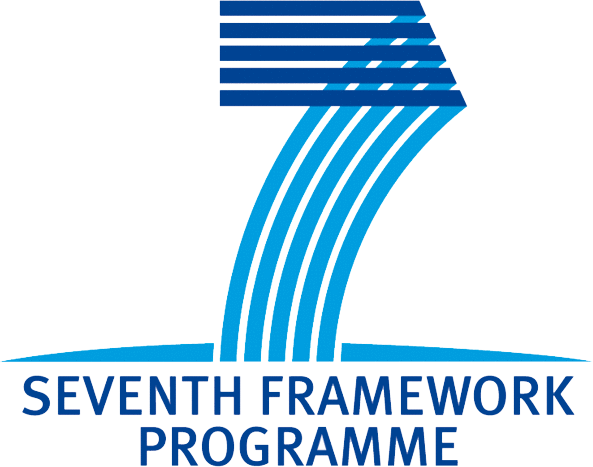 |
BioMot Project | Smart Wearable Robots with Bioinspired Sensory-Motor Skills |
Symbiotic Wearable Robots - BioMot Project from NRG-CSIC on Vimeo.
The main objective of the project is to improve existing wearable robotic exoskeletons exploiting dynamic sensory-motor interactions and developing cognitive capabilities that can lead to symbiotic gait behavior in the interaction of a human with a wearable robot. BioMot proposes a cognitive architecture for WRs exploiting neuronal control and learning mechanisms which main goal is to enable positive co-adaptation and seamless interaction with humans. (read more)
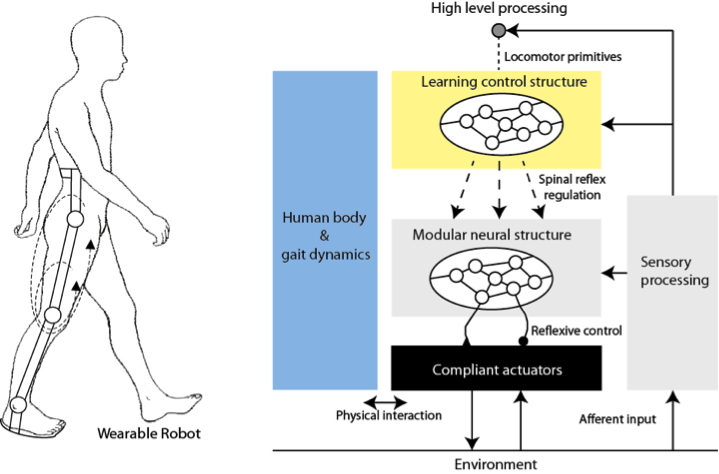
BioMot consortium brings together eight (8) partners from five different countries (Spain, Belgium, Italy, Iceland and Japan) on the basis of the multidisciplinary expertise and trans-nationality required for meeting its ambitious objectives and ensuring proper exploitation of results, both scientifically and clinically/commercially. (read more)
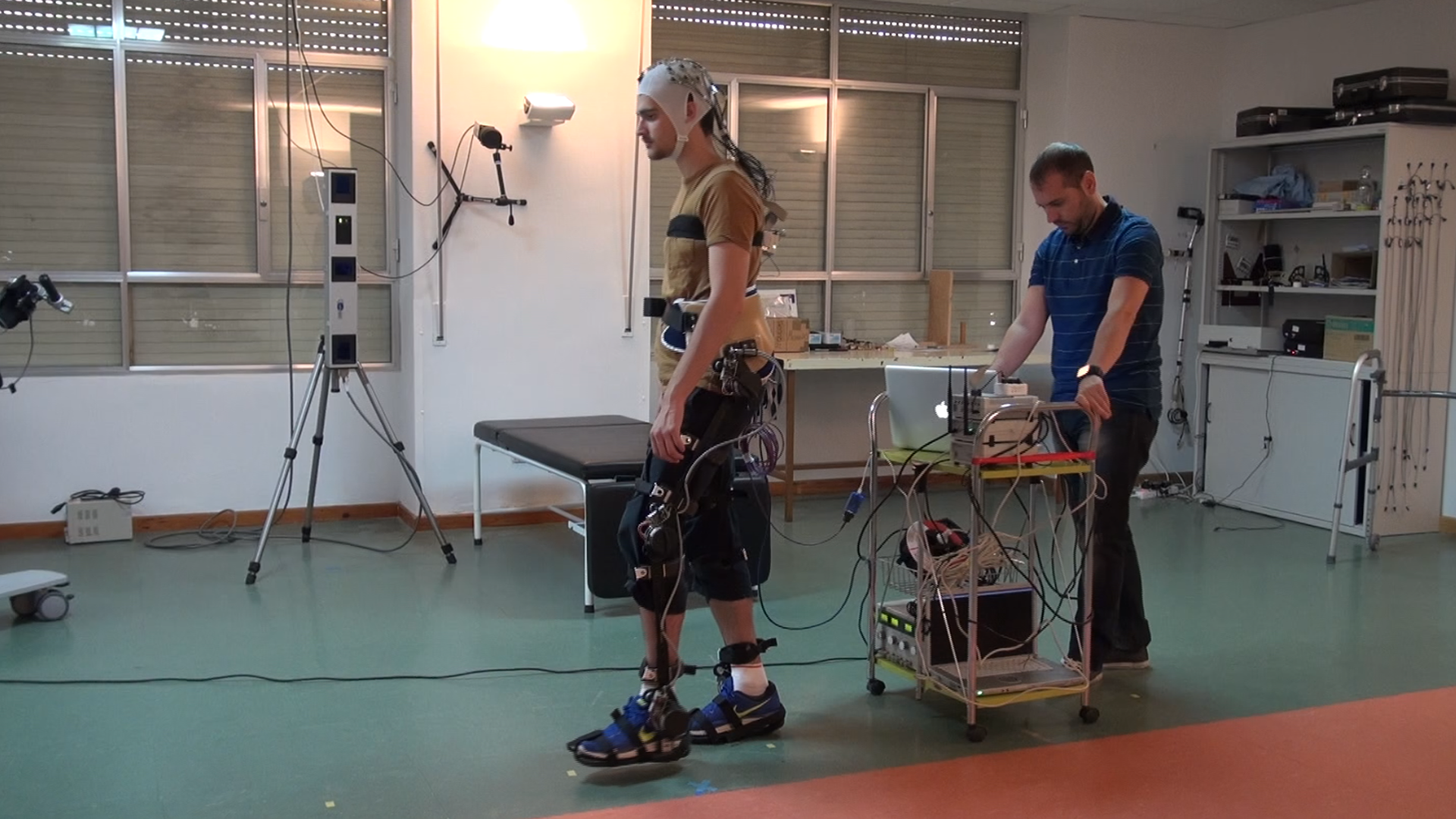 Analysis of cortical function for control and adaptation
Analysis of cortical function for control and adaptation Biomechanical analysis of walking with the H2 wearable exoskeleton
Biomechanical analysis of walking with the H2 wearable exoskeleton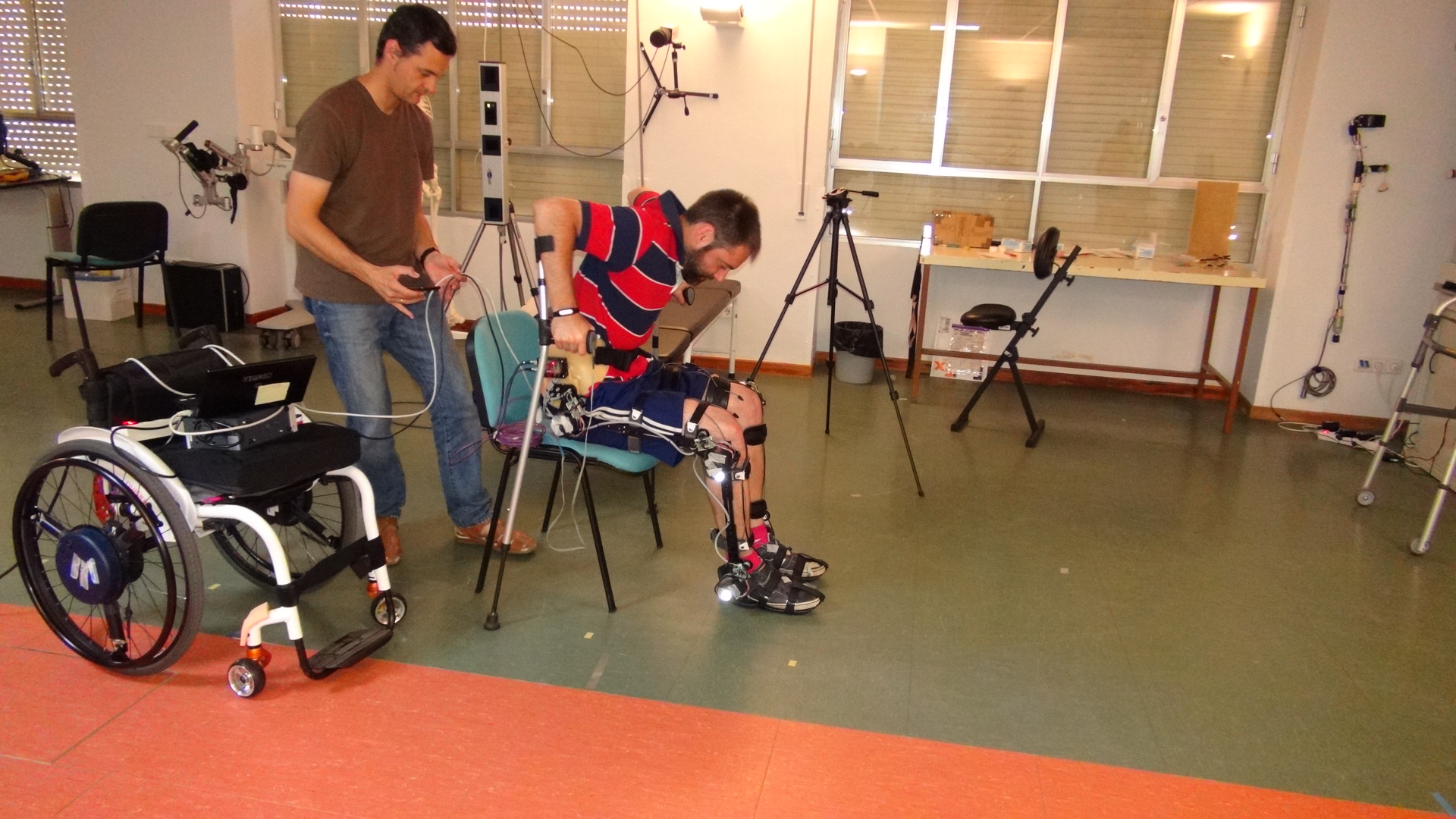 Design of detection algorithms for improvement of usability
Design of detection algorithms for improvement of usability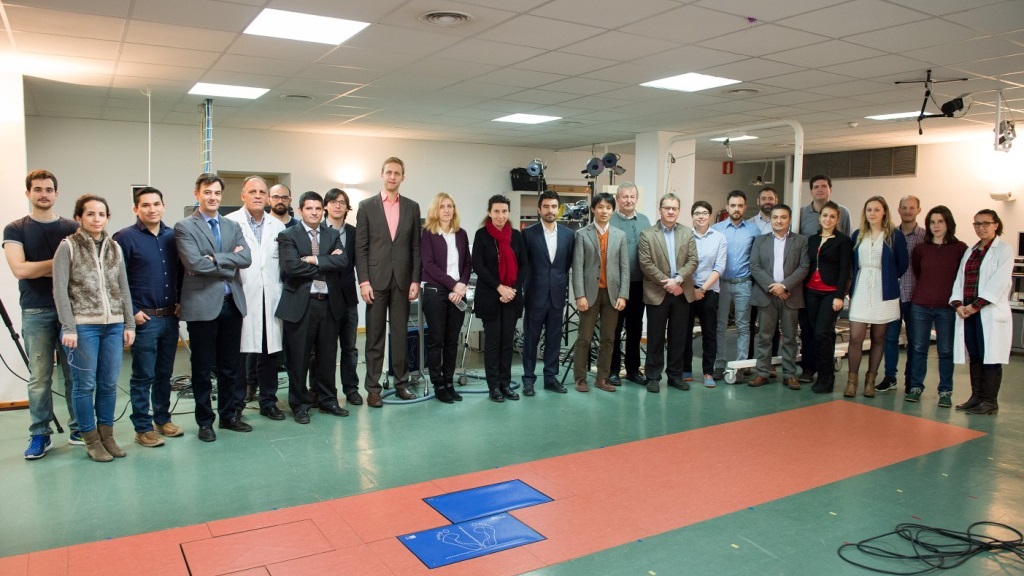 Evaluation 2nd year BioMot projectFrom left to right: Álvaro Costa, Mari Carmen Sánchez Villamañán, Jorge Guevara, José María Azorín, Ángel Gil-Agudo, Juan Francisco Rascón, José Luis Pons, José González Vargas, Bjoern Eskofier, Margit Gföhler, Teresa De-Martino, Juan C. Moreno, Shingo Shimoda, Dirk Lefeber, Freygardur Thorsteinsson, Monica Reggiani, Luca Tagliapietra, Guillermo Asín-Prieto, Javier Roa, Eduardo Iáñez, Marta Moltedo, Karen Junius, Diego Serrano, Elisa Piñuela and Soraya Pérez Nombela.
Evaluation 2nd year BioMot projectFrom left to right: Álvaro Costa, Mari Carmen Sánchez Villamañán, Jorge Guevara, José María Azorín, Ángel Gil-Agudo, Juan Francisco Rascón, José Luis Pons, José González Vargas, Bjoern Eskofier, Margit Gföhler, Teresa De-Martino, Juan C. Moreno, Shingo Shimoda, Dirk Lefeber, Freygardur Thorsteinsson, Monica Reggiani, Luca Tagliapietra, Guillermo Asín-Prieto, Javier Roa, Eduardo Iáñez, Marta Moltedo, Karen Junius, Diego Serrano, Elisa Piñuela and Soraya Pérez Nombela.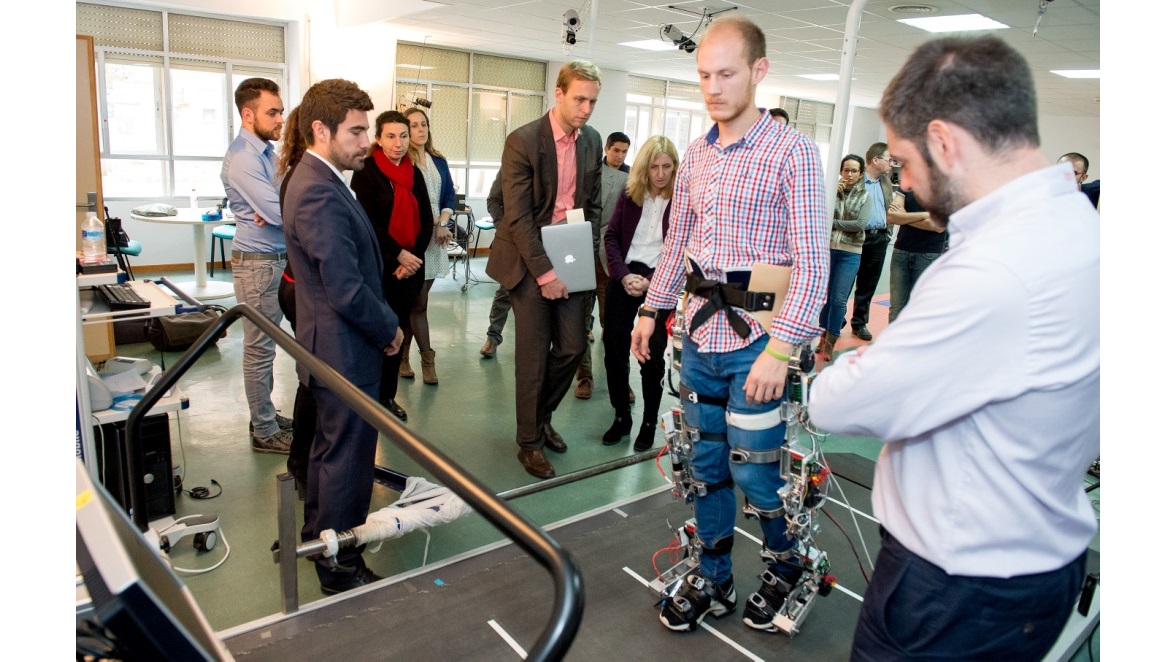 BioMot exoskeleton first prototype used by a healthy subject
BioMot exoskeleton first prototype used by a healthy subject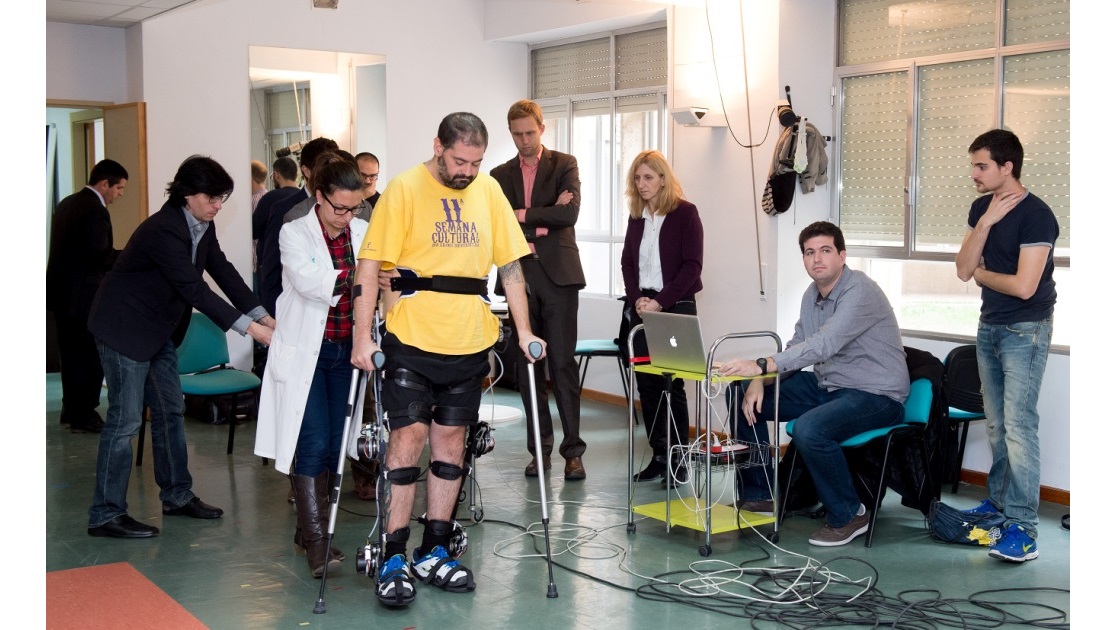 Tacit learning algorithms tested with a patient
Tacit learning algorithms tested with a patient